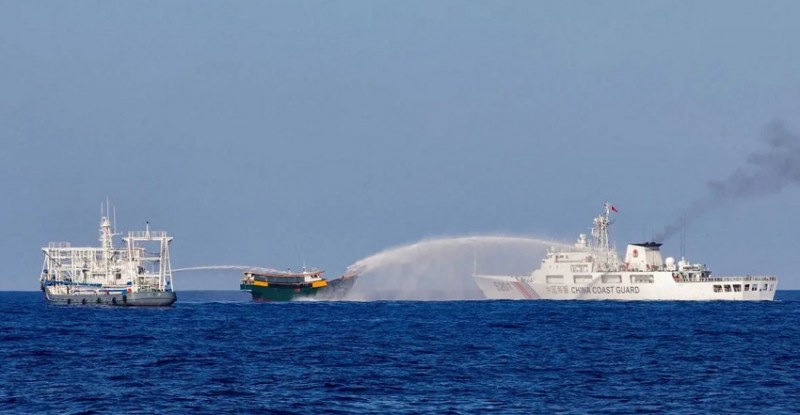
MANILA: The Philippines and China have agreed to create new communication channels to better manage their maritime disputes in the South China Sea, as per a document and a Philippine diplomatic source. This decision comes amid heightened tensions over territorial clashes in the region.
The two nations have been in frequent conflict over jurisdiction in the contested South China Sea. Backed by its defense ally, the United States, the Philippines has increasingly challenged China's presence around strategic areas within Manila's exclusive economic zone (EEZ).
According to the document, titled "Arrangement on Improving Philippines-China Maritime Communication Mechanisms," three specific communication channels will be established for maritime issues. This agreement was signed during regular talks between the two countries on July 2.
Details of the Communication Channels:
Leaders' Representatives: The first channel will be managed by representatives designated by the leaders of each country.
Foreign Ministries: The second channel will involve representatives from the respective foreign ministries at the ministerial or vice-ministerial level.
Coast Guards: The third channel will be established between the respective coast guards, contingent upon the conclusion of a corresponding Memorandum of Understanding (MOU).
Neither the foreign ministries of China and the Philippines nor the Chinese embassy in Manila responded to requests for comments on the matter.
Recent Clashes and Accusations:
Last month, the Philippines accused China's coast guard of intentionally ramming and damaging navy boats and seizing weapons during a resupply mission to troops stationed on a grounded vessel at the shoal. This incident resulted in a Filipino sailor losing a finger. China countered by claiming that the Philippine vessel had illegally entered its territory and had dangerously approached a Chinese ship, leading to a minor collision.
The new communication channels aim to restore trust and rebuild confidence between the two nations to better manage their disputes. Despite previous agreements to establish communication lines between maritime offices, tensions remain high.
The Philippines' resupply missions, often covered by media, have provoked China, which considers the Second Thomas Shoal part of its territory, even though it is 1,300 km away from the mainland and within Manila's EEZ. China claims sovereignty over most of the South China Sea based on historical maps and has deployed numerous coast guard vessels to assert its claims, disrupting activities of neighboring countries such as Malaysia and Vietnam.
China has rejected a 2016 international arbitral ruling that invalidated its extensive claims in the South China Sea under international law. The United States has expressed support for the Philippines in these clashes, condemning China's actions and reaffirming its commitment to the 1951 Mutual Defense Treaty, which obligates it to defend the Philippines if attacked. China has accused the United States of interference.
While China claims nearly all of the South China Sea, the Philippines, Brunei, Malaysia, Taiwan, and Vietnam also have claims to parts of this crucial waterway, through which $3 trillion worth of trade passes annually.
Recent Updates:
Japan, Philippines Forge Historic Defense Pact Amidst Rising Concerns Over China
India to Cut Visa Processing Time for Chinese Technicians to Boost Manufacturing
US Elections: Donald Trump Outlines Economic Agenda for Potential 2nd Term